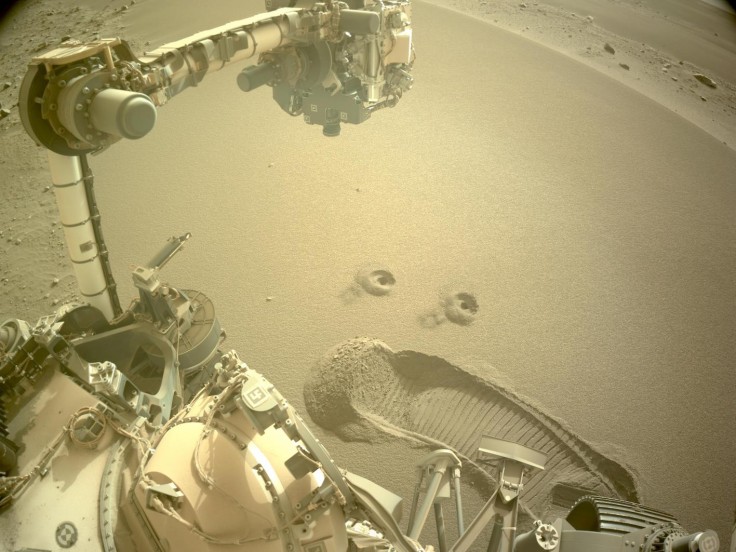The Mars Perseverance rover of the National Aeronautics and Space Administration (NASA) has successfully gathered its first-ever dirt samples from the surface of the Red Planet.
The dirt samples from the Martian surface include broken rocks and dust. According to Tech Times, these collected dirt samples could help astronauts once they visit Mars in the future.

Perseverance Rover Collects Regolith Samples
As the Perseverance rover continues its mission of investigating the geological processes on the Red Planet, it drilled two of what scientists call regolith samples.
The collection of dirt samples is also part of the rover's search for tell-tale evidence that life once existed on the Red Plant.
The regolith samples were collected by the NASA-operated rover first on December 2.
A few days after that, the rover collected the second sample. Tech Times notes that the second dirt sample from Mars was bottled up on Tuesday, December 6.
This is not the first time that the Perseverance rover collected samples from the rocky surface of the Red Planet. Previously, it has already collected 15 rock samples on the Martian surface since it started its mission on the Red Planet on February 2021.
But according to Space.com, the two new regolith samples differ from the existing rock collection of Perseverance.
The rock collection was drilled from boulders, whereas the regolith samples come from a mound of wind-blown sand and dust that resembles a dune on Earth.
The majority of the samples that Perseverance collected throughout its mission are rock cores. This could contain telltale signs of life.
But according to scientists, they have determined that regolith samples could possibly lead to understanding the geological processes that have shaped the Red Planet.
Moreover, the collected regolith samples could help NASA plan for future space missions. Similarly, it could help mitigate the challenges astronauts could eventually experience on the Martian surface.
Read Also: NASA Shares Perseverance Rover Photo of the Martian Landscape
NASA, ESA Develop Return Mission to Bring Back Samples to Earth
According to Space.com, scientists need to determine whether regolith from Mars contains perchlorate. It's a toxic chemical that could potentially be a health risk to astronauts if inhales or ingested in large amounts.
With this, there is a growing interest in the Martian regolith and the effort to include it in the collection that will be returned to Earth as part of the return mission being developed by NASA and the European Space Agency (ESA).
Once returned to Earth, scientists could study the material in greater detail in labs using more sensitive and powerful equipment, which are better than the chemical analysis instruments robots carry to the Red Planet.
The samples of regolith were collected by the Perseverance rover using a drill placed on the end of its robotic arm. However, it employed a different drill bit than the one that it has used to drill for the previous samples.
The drill bit used in collecting the regolith samples was engineered and tested using simulated Martian regolith developed by scientists at NASA's Jet Propulsion Laboratory (JPL) in California.
During the simulation, they used material consisting of volcanic rock crushed into different particle sizes. It ranges from large coarse pebbles to fine dust.
The faux-Mars material was inspired by images of the actual Martian regolith. It was also based on the data collected by previous missions on the Red Planet.
Related Article: NASA Mars Rover Pictures: Perseverance Snaps Out-of-Place Photo of Drill Bit From 2021!









